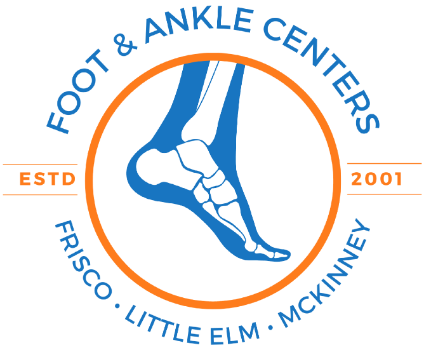What Is a Neuroma? Understanding Foot Pain at Foot & Ankle Centers
Saturday, July 26, 2025 | By: Foot & Ankle Centers of Frisco, Little Elm, McKinney
Did you know that up to 10% of people suffer from foot-related issues at some point in their lives? One common cause of foot pain is neuroma—a thickening of nerve tissue that can lead to burning, tingling, or sharp pain in the ball of the foot, especially between the toes. At Foot & Ankle Centers in Frisco, Little Elm, and McKinney, Dr. Knapp, Dr. Tavakoli, and Dr. Treleven specialize in diagnosing and treating conditions like neuromas. In this comprehensive guide, we will explore everything you need to know about neuromas, including symptoms, causes, preventative measures, and treatment options.
Understanding Neuromas
A neuroma is specifically a benign growth or thickening of nerve tissue. The most common type, called Morton’s neuroma, occurs in the area between the third and fourth toes. While it may be benign, it can lead to significant discomfort and may affect mobility when left untreated.
Symptoms of Neuromas
Neuromas cause various symptoms based on their location and severity. Common signs include:
- Burning Sensation: Often felt in the ball of the foot, this symptom can become increasingly intense when standing or walking.
- Tingling or Numbness: Many patients report a tingling sensation in their toes and foot.
- Sharp Pain: Individuals may experience sharp shooting pains that radiate toward the toes, typically triggered by particular footwear or activities.
- Sensation of Pebbles in Shoes: Patients frequently describe the feeling of having a pebble stuck in their shoe.
Causes and Risk Factors
Our doctors at Foot & Ankle Centers suggest neuromas develop due to a combination of factors, including but not limited to:
- Improper Footwear: High-heeled shoes or shoes that are too tight can compress nerves in the feet, leading to neuroma formation.
- Foot Abnormalities: Conditions such as flat feet or bunions can alter foot mechanics, increasing the risk for developing neuromas.
- High-impact Activities: Repeated trauma to the foot from high-impact exercises can exacerbate nerve irritation.
- Gender: Women are significantly more prone to develop neuromas compared to men, possibly due to footwear choices.
Diagnosing a Neuroma
If you suspect you have a neuroma, it’s crucial to get a proper diagnosis from a foot and ankle specialist. The diagnosis may involve:
- Clinical Examination: A medical professional will assess your foot structure and pain responses during physical examinations.
- Imaging Tests: Ultrasounds, X-rays, or MRIs help visualize the nerve and assess the condition. At Foot & Ankle Centers, we use various innovative imaging services to provide accurate diagnosis and effective treatment.
Treatment Options
Addressing a neuroma often involves a multifaceted approach. Here are common treatments you may learn about during your appointment at Foot & Ankle Centers:
1. Conservative Treatments
- Footwear Modification: Switching to properly fitting shoes with wide toe boxes can ease pressure on the affected area.
- Orthotic Inserts: Custom foot orthotics can help correct foot mechanics and alleviate pressure.
- Rest and Ice Therapy: Avoiding activities that exacerbate pain and applying ice to the affected area can help reduce inflammation.
- Anti-inflammatory Medications: Over-the-counter medications like ibuprofen can aid in reducing pain and swelling.
2. Physical Therapy
- Qualified physical therapists may provide exercises to strengthen surrounding muscles and improve flexibility, which can alleviate symptoms.
3. Injections
- Corticosteroid injections can reduce inflammation and provide temporary relief in cases of severe pain.
- Sclerosing alcohol injections may also be used to shrink the neuromas.
4. Surgery
- If conservative treatments fail, surgery can be considered to remove the neuroma. This option should only be discussed if pain persists or worsens despite ongoing treatments.
Prevention Strategies
Preventing the development of a neuroma requires proactive care. Consider the following strategies:
- Choose Proper Footwear: Select shoes that provide adequate support and space for your toes. Avoid high heels and tight footwear.
- Foot Care Routine: Regularly inspect your feet for any signs of abnormality or discomfort and consult a professional if needed.
- Stay Active, but Smart: Engage in low-impact exercises that do not place excessive strain on your feet. Activities such as swimming or cycling are more forgiving on your joints.
When to Seek Help
If persistent foot pain affects your daily life, consult a specialist promptly. Early care can prevent complications. At Foot & Ankle Centers, our board-certified podiatrists create personalized plans to relieve pain and restore comfort.
Taking Action
Ignoring foot pain, like from neuromas, can impact your mobility and quality of life. If you experience symptoms, don’t wait—early intervention is crucial. Dr. Knapp, Dr. Tavakoli, and Dr. Treleven at Foot & Ankle Centers in Frisco, Little Elm, and McKinney are here to help you manage neuromas and promote healthier, more active feet. Prioritize your foot health by seeking expert care and guidance.


Leave a comment
0 Comments